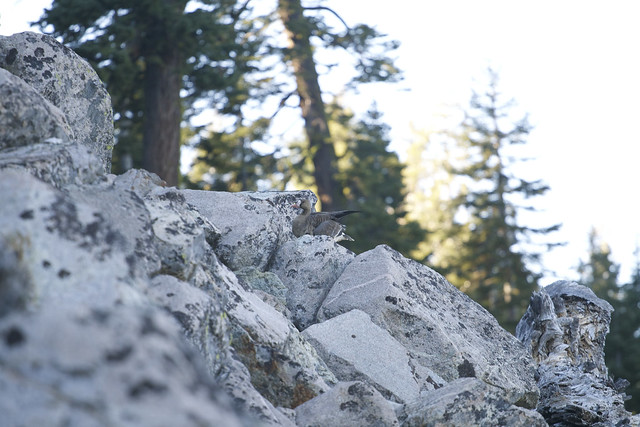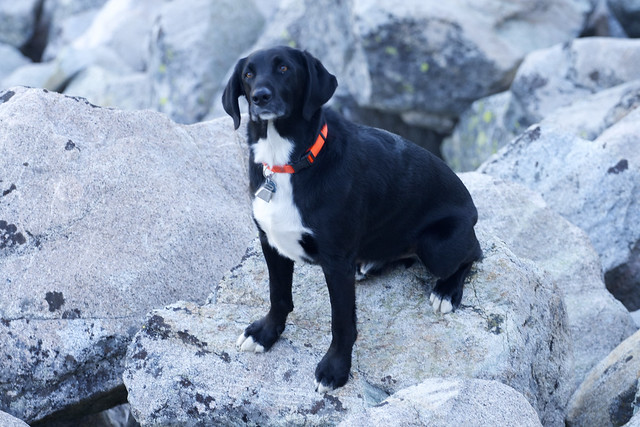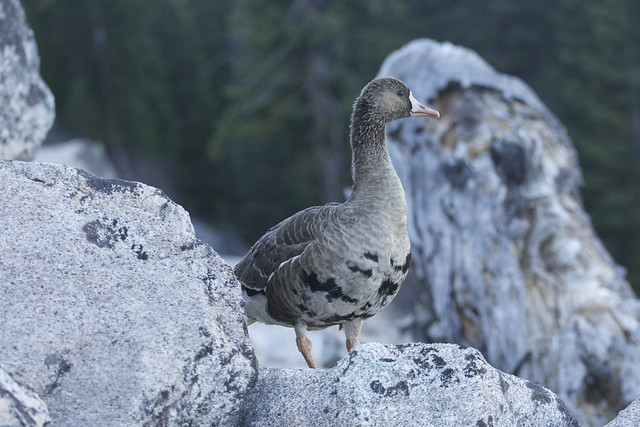A team of Californian naturalists has described an endangered new species of bird hidden deep within the rocky crevices of the Sierra County High Country

Some 2 million species of plants, animals and other assorted organisms have been discovered on Earth. Perhaps millions are left to be discovered and described.
Today Camera Trapping Campus has that distinct honor.
The new species belongs to Anser, a genus of waterfowl (grey geese & some white) in the family Anatidae.

It is a difficult-to-see creature, living mostly among the large boulders of talus slope. With its grey dominant plumage, camouflage is provided to avoid both predators from above and large ground-stalking mammals, like California's only known Wolverine.
Further studies are needed to determine feeding habits, though it is theorized that they eat lichen from the boulders. It is definitely known that they don't like lettuce.
One vocalization is known: a low grunt, "rrrrr".
The rare goose was first spotted at 6300 feet with canine assistance, as the barking by a naturalist's dog alerted the group to scan the slope for animal presence.
Some 2 million species of plants, animals and other assorted organisms have been discovered on Earth. Perhaps millions are left to be discovered and described.
Today Camera Trapping Campus has that distinct honor.
The new species belongs to Anser, a genus of waterfowl (grey geese & some white) in the family Anatidae.

It is a difficult-to-see creature, living mostly among the large boulders of talus slope. With its grey dominant plumage, camouflage is provided to avoid both predators from above and large ground-stalking mammals, like California's only known Wolverine.
Further studies are needed to determine feeding habits, though it is theorized that they eat lichen from the boulders. It is definitely known that they don't like lettuce.
One vocalization is known: a low grunt, "rrrrr".
The rare goose was first spotted at 6300 feet with canine assistance, as the barking by a naturalist's dog alerted the group to scan the slope for animal presence.



Is this for real? Awesome.
ReplyDeleteThis may however be a thermo-morph of the GWFG. The only other observations of stray GWFGs BTW have been made by nuts who wander around north facing scree slopes in the fall. The best guess is that the migratory delay is driven by a need to chill out. They geese thus postpone arrival to the wintering grounds which we all know are way too warm these days, even if it is November.
ReplyDeleteGood work, Fred!
ReplyDeleteI’m going to go with the theory that this goose knew it was a good idea to lay low until turkey day had past. Alternatively, it may have been still dazed and confused from a close encounter with a low flying aircraft. Good spot Fred!
ReplyDeleteMaybe that's the Christmas goose hiding out until it's time to head for the oven.
ReplyDelete